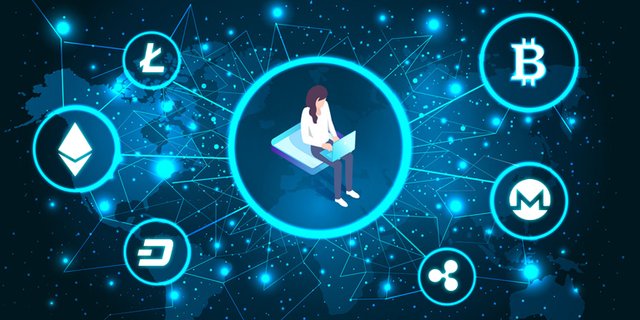
The demand for crypto tokens has skyrocketed as blockchain technology continues to revolutionize industries worldwide. Whether you're launching an Initial Coin Offering (ICO), Initial DEX Offering (IDO), or designing a utility token for your ecosystem, choosing the right crypto token development platform is crucial for your success. Here's a detailed look at the key features to consider when selecting a crypto token development platform.
1. Support for Multiple Blockchain Standards
A reliable crypto token development platform should support a wide range of blockchain standards. While Ethereum’s ERC-20 and Binance Smart Chain’s BEP-20 are the most popular, platforms should also offer compatibility with newer standards such as Solana (SPL), Polygon (MATIC), and Avalanche (AVAX). Multi-chain support allows flexibility, catering to a broader audience and ensuring that tokens can be integrated into various ecosystems.
2. Customization Options
Every token has unique functions and characteristics depending on its use case—be it utility, governance, or security. A robust token development platform should offer extensive customization options. These options allow users to define the token’s total supply, decimals, name, symbol, and even complex mechanisms like minting, burning, staking, and governance. Customization is essential for aligning your token with your project's goals.
3. Smart Contract Templates
Smart contracts automate token functionalities, making them essential in token development. Look for a platform that provides pre-built and customizable smart contract templates. These templates should be designed with best security practices, reducing the chance of vulnerabilities or loopholes that hackers could exploit. Additionally, platforms should support popular programming languages like Solidity (for Ethereum) and Rust (for Solana), allowing developers to code advanced logic into the contracts.
4. Token Minting and Burning Capabilities
Minting and burning tokens are essential processes in maintaining a token’s supply. A reliable platform should offer the flexibility to mint new tokens or burn existing ones as needed. This is especially important for projects using deflationary models or token rewards. Automated minting and burning features will also streamline the supply control process without manual intervention.
5. Security and Auditing Tools
Security is paramount in the crypto space. A secure token development platform should provide tools for smart contract auditing, ensuring that your contracts are free from vulnerabilities and exploits. Some platforms may even offer third-party auditing integrations. Additionally, they should feature security protocols like multi-signature (multisig) wallets, secure private key management, and anti-hacking measures to prevent malicious attacks.
6. Compliance with Regulatory Standards
Navigating regulatory requirements is crucial when developing a crypto token. The platform you choose should offer features that assist in complying with KYC/AML regulations, particularly for security tokens or tokens used in regulated industries. It’s also important to ensure the platform supports the creation of tokens that can be classified as compliant within various legal jurisdictions, enabling smooth cross-border operations.
7. Integration with Decentralized Exchanges (DEXs)
Liquidity is vital for any token project, and one of the best ways to boost liquidity is by listing the token on decentralized exchanges (DEXs). Look for a token development platform that offers seamless integration with major DEXs like Uniswap, PancakeSwap, or Serum. This feature will simplify the process of listing your token and providing liquidity options for your users.
8. Staking and Yield Farming Capabilities
Incorporating staking and yield farming can incentivize holders to participate actively in your ecosystem. A top-tier token development platform should offer built-in tools to easily create staking programs, yield farming pools, or liquidity mining strategies. These features allow users to earn rewards while holding your token, fostering long-term commitment and increasing its value.
9. Cross-Platform Compatibility
Interoperability is a growing trend in the blockchain world. A good token development platform should offer cross-platform compatibility, allowing your token to move freely between different blockchains. Bridges between Ethereum, Binance Smart Chain, and other blockchains ensure that your token reaches a wider audience, expands liquidity, and enhances usability in multiple ecosystems.
10. User-Friendly Interface and Dashboard
An intuitive, user-friendly interface is a must-have feature for non-technical users. A good platform should offer a dashboard where users can easily manage token creation, issuance, transfers, and tracking. This feature allows founders to focus on project growth and business operations without getting bogged down by technical complexities.
11. Scalability
As your project grows, your token should be able to handle a large number of transactions. A platform with scalability features—such as Layer 2 solutions, sharding, or sidechains—ensures your token can support high transaction volumes without suffering from slow processing speeds or high gas fees. Choosing a scalable platform will future-proof your token for increased user adoption.
12. Community and Support
Having access to a thriving developer community and customer support is invaluable during the token development process. Platforms with a strong community can provide assistance, code reviews, and tutorials. Furthermore, professional support—whether via live chat, email, or forums—will help you resolve any technical issues quickly and efficiently.
Conclusion
Choosing the right crypto token development platform is a critical step toward the success of your blockchain project. By focusing on multi-chain support, security, compliance, scalability, and additional features like staking, minting, and cross-chain capabilities, you can ensure that your token is built for longevity and wide adoption. Carefully consider these key features to align the platform’s capabilities with your project’s goals and future needs.